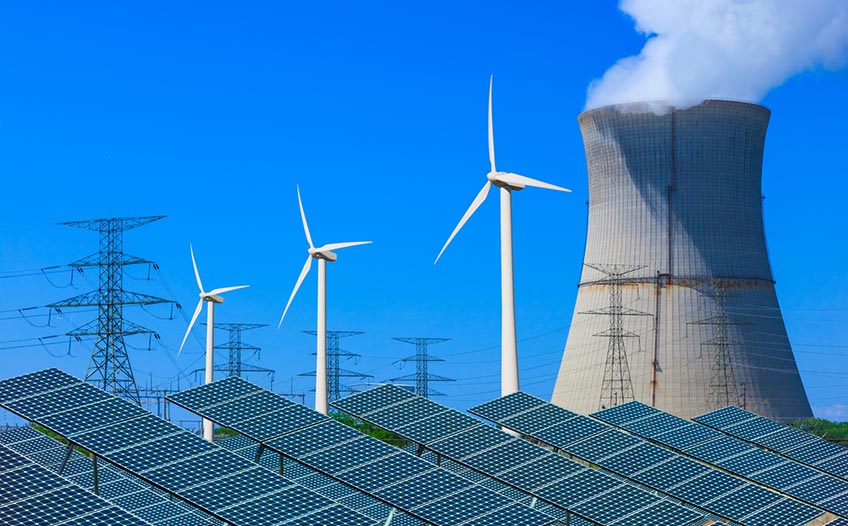Singapore Budget 2025: Nuclear Energy Ambitions & ASEAN Integration – Global Trends and Local Realities
Singapore’s Budget 2025 signals a transformative energy strategy, blending cautious nuclear research with regional collaboration. As global nuclear capacity surges—with 25 reactors under construction in China alone—the city-state has inked a landmark civil nuclear cooperation deal with the US. Meanwhile, plans to import 30% of electricity from ASEAN neighbours by 2030 mark a strategic shift towards interdependence. Here’s how Singapore is navigating its energy future amid global trends and regional dynamics.

Nuclear Energy: A Global Surge & Singapore’s Cautious Steps
Budget 2025 highlights nuclear energy as a long-term option, mirroring global momentum. Worldwide, 440 reactors generate 9% of electricity, making nuclear the second-largest low-carbon source (25% of clean power). Over 50 countries, including France (70% nuclear-dependent) and fast-growing China (55 reactors), rely on this “always-on” energy.
Key Developments:
-
US-Singapore Civil Nuclear Pact: Prime Minister Lawrence Wong announced agreements with the US to advance research, likely focusing on small modular reactors (SMRs) and safety frameworks.
-
Global Projections: The International Energy Agency (IEA) forecasts nuclear capacity to nearly double by 2050, reaching 916 GWe.
Challenges for Singapore:
-
Land Constraints: Unlike the US (92 reactors) or France, Singapore lacks space for large-scale plants.
-
Public Trust: Safety concerns persist, though SMRs—smaller and safer—could alleviate fears.
-
Technological Readiness: As PM Wong stressed, adoption hinges on commercial viability and failsafe systems (World Nuclear Association).
ASEAN Power Grid: Diversifying Beyond Nuclear
While nuclear remains speculative, Budget 2025 accelerates regional energy imports. Singapore aims to source 30% of electricity from ASEAN neighbours by 2030, primarily via the Lao PDR-Thailand-Malaysia-Singapore Power Integration Project (LTMS-PIP).
Why Regional Imports Matter:
-
Reduces LNG Reliance: Currently, 95% of Singapore’s electricity comes from LNG.
-
Renewables Boost: Hydropower from Laos and future solar/wind imports align with decarbonisation goals.
-
Geopolitical Shift: This pivot echoes lessons from past water disputes with Malaysia, fostering ASEAN unity through shared infrastructure (EMA).

Global Nuclear Leaders: Can Singapore Join the Club?
As Budget 2025 sparks debate, global data offers insights:
| Country | Reactors | Electricity from Nuclear |
|---|---|---|
| France | 56 | ~70% |
| USA | 92 | 20% |
| China | 55 | 5% (but fastest-growing) |
Singapore’s potential entry faces unique hurdles. Unlike Slovakia or Ukraine (50% nuclear-dependent), its compact size necessitates SMRs or floating reactors. Yet, the US partnership and IEA’s bullish projections suggest opportunities (Statista).
Risks & Readiness: Is Singapore Prepared?
Nuclear Risks:
-
Waste Management: No current solution for long-term storage.
-
Costs: SMRs remain expensive, though prices may fall by 2035.
ASEAN Dependency Risks:
-
Grid Vulnerabilities: Cross-border infrastructure requires robust ASEAN coordination.
-
Political Volatility: Past tensions with Malaysia underscore the need for diversified partners.

A Dual Pathway for Energy Security
Singapore’s Budget 2025 reflects a pragmatic duality: betting on ASEAN collaboration while hedging with nuclear research. The US partnership and regional grid investments signal a future where energy security hinges on both global trends and local adaptability.
As the world adds 25 reactors annually, Singapore’s journey—from observer to potential player—will test its ability to turn constraints into innovation. Whether through ASEAN’s power lines or next-gen nuclear tech, the city-state is rewriting its energy playbook for a volatile era.
- Singapore Budget Summary
- Singapore Budget for Working Professionals
- Singapore Budget 2025: Disbursement Timeline for Working Professionals
- Singapore Budget 2025: 6 Key Support Measures for Working Adults with Elderly Parents
- Singapore Budget 2025: Disbursement Timeline for Business Owners and SMEs
- SG Budget 2025: How Much Will Parents Save on Their Kids (Monthly) with More Support Given
- SG Budget 2025: Fresh SGD 10,000 SkillsFuture Credit for SME Workforce Transformation
- SG Budget 2025: Accelerating Clean Living with EV Incentives in Singapore
- Singapore Budget 2025: Key Support Measures for Business Owners and SMEs
- Singapore Budget 2025: Strategic Levers for Business Growth and Innovation
- Singapore Budget 2025: Nuclear Energy Ambitions & ASEAN Integration – Global Trends and Local Realities
You can now be our community contributor and make a pitch to have your favourite personality be on our show.
Join our community group and drop us your insights on this topic.

-4.png?width=50&name=Square%20(2)-4.png)








Let us know what you think of this post